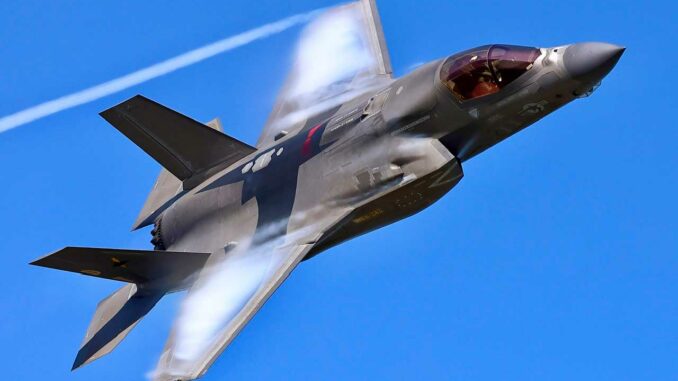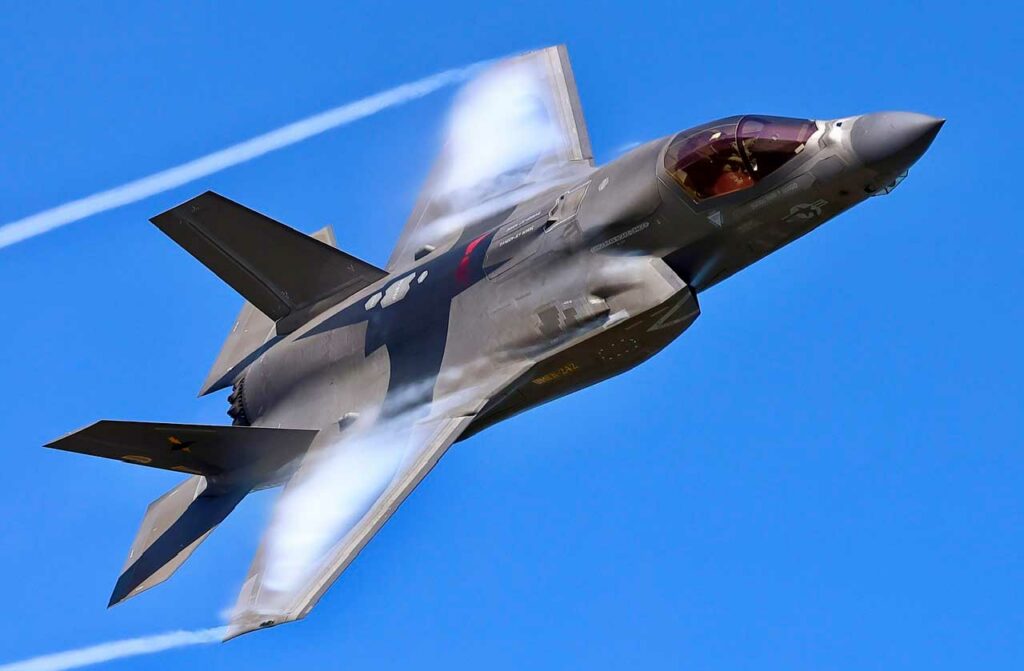
Europe is buying the American F-35 in huge numbers despite its ambitions for autonomous defense. This is a strategic paradox in the face of geopolitical tensions and Russia.
In a world marked by growing geopolitical uncertainty, tensions with Russia, and sometimes fragile transatlantic relations, Europe finds itself at a strategic crossroads. Yet despite repeated calls for strategic autonomy and a stronger European defense, European countries continue to invest heavily in US military equipment, notably Lockheed Martin’s F-35 fighter jet. This dependence raises a fundamental question: is Europe suffering from a form of strategic schizophrenia, torn between its ambitions for independence and its reality of technological and military subordination to the US?
The geopolitical context: Europe under pressure
Russia’s invasion of Ukraine in 2022 acted as a wake-up call for Europe, revealing the flaws in its defense capabilities and its dependence on NATO, which is dominated by the US. Tensions with Russia, combined with an at times unpredictable US stance – particularly under the presidency of Donald Trump (2017-2021 and potentially from 2025 onwards) – have reignited debates on the need for European strategic sovereignty. At the same time, the emergence of China as a superpower and transatlantic economic rivalries (e.g., over subsidies in the US Inflation Reduction Act) have heightened the need for a Europe capable of defending its interests independently.
Against this backdrop, the European Union (EU) and its member states have stepped up initiatives to strengthen their defense industry. The European Defense Fund (EDF), with a budget of €8 billion for 2021-2027, aims to stimulate innovation and cooperation in defense projects. Programs such as the Future Combat Air System (FCAS), involving France, Germany, and Spain, and the European Main Battle Tank (MGCS) illustrate this ambition. However, these efforts coexist with a paradoxical reality: the massive purchase of US military equipment, particularly the F-35.
The F-35: a symbol of European dependence
The F-35 Lightning II, a fifth-generation multi-role fighter jet, has become a mainstay of European air forces. By 2025, 13 European countries, including the United Kingdom, Italy, the Netherlands, Norway, Belgium, Poland, Finland, and Germany, have ordered or are considering purchasing this aircraft. With a unit cost exceeding $80 million (not including maintenance and training costs), European orders represent a financial windfall for Lockheed Martin and US industry.
Why all the hype? The F-35 offers advanced capabilities, particularly in terms of stealth, interoperability with NATO forces, and data collection. For countries such as Poland and Finland, which face the Russian threat, the rapid acquisition of a proven aircraft is a priority. In addition, the US is exerting diplomatic and economic pressure to promote the F-35, often by including it in NATO military cooperation packages.
However, this dependence comes at a strategic cost. The purchase of F-35s implies long-term reliance on the United States for maintenance, software updates, and spare parts. This limits the operational sovereignty of European forces and hinders the development of the local defense industry. For example, Germany’s decision to replace its Tornado aircraft with the F-35 has drawn criticism in France, where there are fears that the purchase will compromise the financing and momentum of the SCAF.

Obstacles to autonomous European defense
If Europe continues to favor American solutions, it is partly because of the structural weaknesses of its defense industry. First, the fragmentation of the European market, where each country favors its national champions, hinders the emergence of competitive joint projects. The SCAF, for example, suffers from differences between Dassault Aviation (France) and Airbus (Germany) over the sharing of responsibilities and technologies.
Second, European projects such as the SCAF and the Eurodrone require massive investments and long lead times—often a decade or more. Faced with urgent threats, many countries prefer “off-the-shelf” solutions such as the F-35, to the detriment of European programs that are still in their infancy.
Thirdly, NATO, although a guarantor of collective security, paradoxically reinforces dependence on the United States. The interoperability of European forces is often calibrated to US standards, making it difficult to integrate non-US equipment. Furthermore, political pressures within the Alliance discourage some countries from becoming technologically independent.
Towards a way out of the paradox?
To overcome this strategic schizophrenia, Europe must adopt a coherent and proactive approach. First, it must accelerate the consolidation of its defense industry. This means rationalizing investments, reducing duplication, and promoting synergies between states. The EDF and Permanent Structured Cooperation (PESCO) are promising tools, but their impact will remain limited without strong political will.
Second, Europe must invest in disruptive technologies such as artificial intelligence, drones, and cyber systems to close its technological gap. These areas offer opportunities to develop autonomous capabilities without directly competing with the American giants.
Finally, strategic communication is needed to convince public opinion and decision-makers of the importance of European defense. Too often, US purchases are seen as a guarantee of immediate security, while European projects are criticized for their slowness. A long-term vision, backed by concrete successes, could reverse this perception.
An existential choice for Europe
Europe is not schizophrenic by nature, but it finds itself caught in a strategic dilemma. On the one hand, the need for a rapid response to geopolitical threats pushes it towards American solutions such as the F-35. On the other hand, its aspiration for strategic autonomy requires investment in a robust European defense industry. This paradox reflects a deeper tension between short-termism and long-term vision, between comfortable dependence and ambitious sovereignty.
In 2025, Europe has the intellectual, technological, and financial resources to meet this challenge. But it will require political courage, greater coordination, and a collective awareness that Europe’s security cannot rely on imports forever. The choice between the F-35 and the SCAF is not just technical: it is existential for Europe’s future as a geopolitical power.
War Wings Daily is an independant magazine.